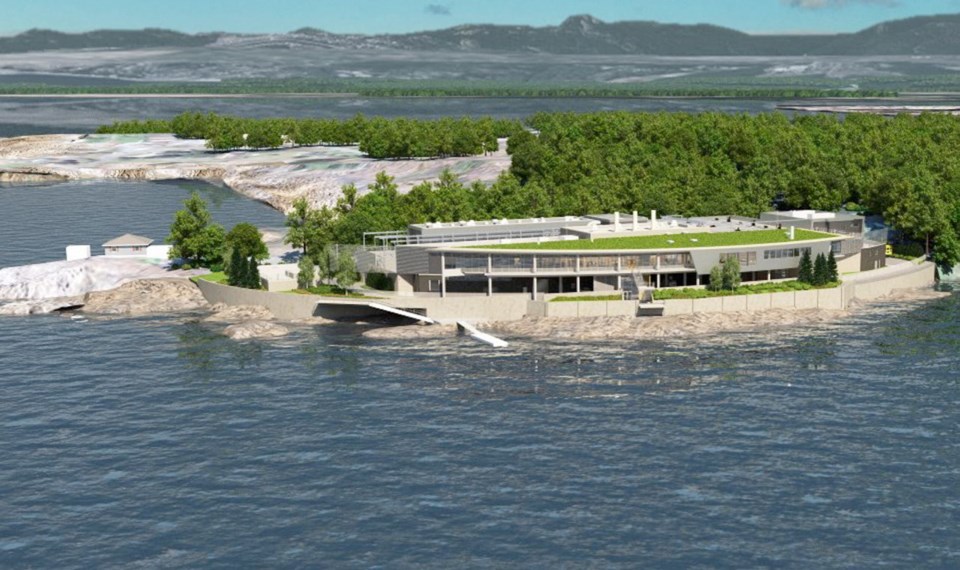Far from hitting the stop button on the Seaterra sewage treatment megaproject, Capital Regional District staff are recommending pressing fast forward to keep the project alive.
“I’m a bit frustrated,” Esquimalt Mayor Barb Desjardins said of the recommendation. “When does no mean no? And when is it that we’re going to take the initiative to say we have to change course here?”
After B.C. Environment Minister Mary Polak declined to overturn Esquimalt’s refusal to rezone McLoughlin Point for a sewage-treatment plant, Desjardins said it was time for a re-think of the $783-million project.
In a resolution slated to be debated Wednesday, she proposes suspending Seaterra, the commission overseeing sewage treatment implementation, until Jan. 15 to allow the CRD board and member municipalities time to consider other options. She also is calling for all Seaterra-related projects to be terminated by Sept. 30.
But CRD staff are recommending instead that the region start looking for a new site for a centralized treatment plant while also examining the costs of building several treatment plants. They also suggest revisiting the issue with Polak now that Seaterra has selected a group to build a plant and has a plant design.
Victoria Coun. Geoff Young, who chairs the CRD’s liquid waste management committee, said all options have to be examined, and quickly.
“What we have to do is look at how we can move forward and there are a whole bunch of different ways of possibly moving forward.”
To expedite finding an alternate site, CRD staff suggest conducting a competition in which municipalities and First Nations would be asked if they have a potential site available and, if so, what they would want for an amenity package.
CRD staff are estimating the additional costs of moving from McLoughlin to a different location — if one can be found — could be between $60 million and $100 million.
A host municipality or First Nation could stand to gain financially. The CRD had offered Esquimalt an amenity package including oceanfront walkways, a million-dollar bike and path system on Lyall Street, public art, bike lanes, and road improvements to rezone the McLoughlin site. The CRD originally estimated the package to be $13 million. That ballooned to $20 million when the true cost of barging construction materials, as requested by Esquimalt, was factored in. Young said that’s enough money to write a $1,000 cheque to every Esquimalt citizen. A new host community could expect something similar.
Meanwhile, the CRD is facing a number of deadlines. To meet federal wastewater regulations, it is required to have a secondary treatment plant in place by 2015. It has until the end of this month to apply for an extension to 2020, but to make that application, it has to have a plan detailing how it expects to comply with the regulations.
Without McLoughlin as a treatment plant site, there essentially is no plan. That would mean that come Jan. 1, the CRD could be subject to fines of up to $500,000 a day under the Fisheries Act. CRD staff recommend applying for the extension, while making it clear that there could be an amendment to the plan.
The CRD has to have a plant running by 2018 to meet federal and provincial government funding deadlines or risk losing $501 million in senior government grants. A CRD staff report says having to find a new centralized treatment plant site would push completion to 2020 and if a decentralized option is chosen completion could be pushed to 2023.
If municipalities decide to build their own treatment plants, the funding agreements would be invalidated, the report says.



